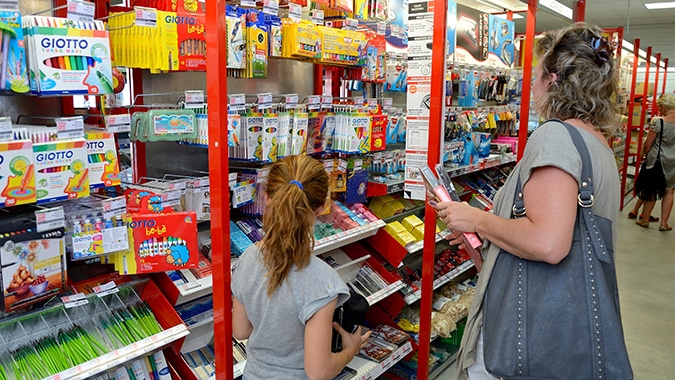Consumer prices fell 0.1% on a seasonally adjusted basis last month, following a 0.2% monthly increase in February, the U.S. Bureau of Labor Statistics announced Thursday.
Over the past 12-month period ending in March, the index for all consumer items rose 2.4% before seasonal adjustment, a much slower pace than the 12-month period that ended in February, which saw a 2.8% rise.
Falling energy prices helped keep inflation in check. The monthly index for energy declined 2.4% in March, as a 6.3% drop in the index for gasoline more than offset increases in the indexes for electricity and natural gas. The food index, in contrast, rose 0.4% in March.
Viewed on an annual basis, the energy index decreased 3.3% for the 12 months ending March. The food index increased 3% over the year.
The so-called core CPI, which excluding more volatile food and energy prices, also slowed, coming in at a 0.1% monthly increase in March after rising 0.2% in February. The core index rose 2.8% over the last 12 months, the smallest 12-month increase since March 2021.
Core index items that increased over the month included personal care (+1%), medical care (+0.2%), shelter (+0.2%) education (+0.4%), apparel (+0.4%), and new vehicles (+0.1%). The indexes for airline fares (-5.3%), motor vehicle insurance (-0.8%), used cars and trucks (-0.7%), and recreation (-0.3%) were among the major indexes that decreased in March.
Eggs continue to be the grocery item with the highest monthly percentage cost increases. The price of eggs rose 5.9% in March following a 10.4% monthly increase in February, and a 15.2% increase in January.
The March report marks the first month-over-month decline in overall inflation in nearly five years, the federal government reported. However, the data predates most of the Trump administration’s new tariffs, which will have more of an impact in next month’s report.
The stock market was down Thursday despite the better-than-expected CPI report, with investors apparently concerned that tariffs and a trade war with China would increase inflationary pressures in the month ahead. The S&P 500 fell 4% early Thursday afternoon and the White House clarified that total new tariffs on Chinese goods stand at 145%.




